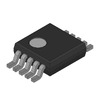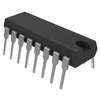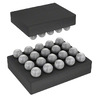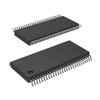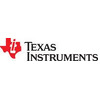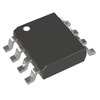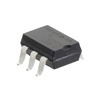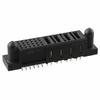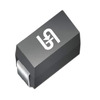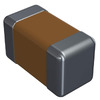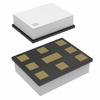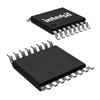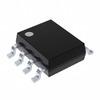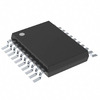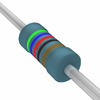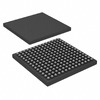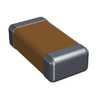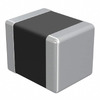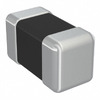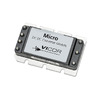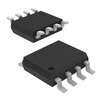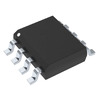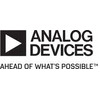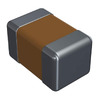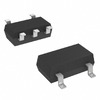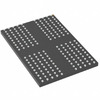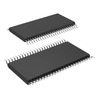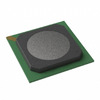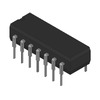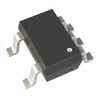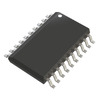Comprehensive Guide to the nRF9160 Development Kit and Its Applications
Discover the nRF9160 Development Kit, a powerful tool for creating LTE-M and NB-IoT applications with ease. This guide covers its features, uses, and everything you need to get started.Catalog
[IMAGE OF nRF9160]
Overview of nRF9160 Development Kit
The nRF9160 Development Kit (DK) is designed to support the nRF9160 System-in-Package (SiP) for LTE-M and NB-IoT applications, offering a complete, versatile solution for developers. Equipped with an nRF52840 board controller, this development kit can also enable Bluetooth® Low Energy (LE) gateway setups, making it adaptable for different IoT configurations. Its dedicated LTE-M and NB-IoT antennas are compatible with global networks, which makes it convenient for widespread deployment across diverse locations. The kit mirrors the certification coverage of the nRF9160 SiP itself, giving you confidence that your project can meet regulatory requirements across regions.
The kit is built with flexibility in mind, providing both a nano/4FF SIM card slot and an MFF2 SIM footprint. This setup allows you to choose between plug-in and soldered (e)SIMs, depending on your specific project needs. For convenience, the kit includes an iBasis SIM card that has global coverage and comes with 10 MB of preloaded data, allowing you to start testing right away.
Key Features of nRF9160 DK
Certification Coverage
The nRF9160 DK provides the same certification coverage as the nRF9160 SiP, making it compatible with global standards for LTE-M and NB-IoT applications. This compatibility allows you to develop applications that meet diverse regulatory requirements without extra certification effort.
nRF52840 Board Controller
An nRF52840 board controller is included, enabling Bluetooth® Low Energy (LE) gateway capabilities. This feature expands the development kit’s use, allowing you to create applications that combine cellular IoT with Bluetooth LE communication, adding versatility to your projects.
LTE-M, NB-IoT, and GNSS Antennas
The development kit comes with dedicated antennas for LTE-M, NB-IoT, and GNSS, each with SWF RF connectors. These antennas ensure that your applications can access cellular connectivity and location services without needing additional hardware adjustments.
SEGGER J-Link OB Programmer/Debugger
The SEGGER J-Link OB programmer and debugger offers an integrated, easy-to-use programming and debugging experience. With this tool, you can quickly load and test code, helping you save time on development and troubleshooting.
Power Measurement Pins
Pins are included for measuring power consumption, which works well with Nordic's Power Profiler Kit II. This feature allows you to monitor and optimize the power usage of your application, which can be especially useful for battery-powered IoT devices.
User-Programmable LEDs and Buttons
The nRF9160 DK features four user-programmable LEDs, two buttons, and two switches, giving you interactive control options for your application. These components make testing and prototyping easier by providing simple ways to interact with the system.
Flexible Power Supply
The kit supports a 3.0–5.5 V supply from external sources or 5 V from USB, giving you multiple power options to fit your setup. This flexibility helps you power the device conveniently, whether you are working at a desk or deploying it in the field.
USB Power Supply
In addition to external power, the nRF9160 DK can be powered directly from USB. This feature provides a straightforward option to power the board when testing or debugging, making the setup process simpler.
Hardware Drawings of nRF9160 DK
[IMAGE OF nRF9160 DK hardware drawings]
Block Diagram of nRF9160
[IMAGE OF nRF9160 Block diagram]
nRF9160 Specifications
Technical specifications, features, characteristics, and components with comparable specifications of Nordic Semiconductor ASA nRF9160 DK.
[TABLE OF Specifications]
Interface Specifications of nRF9160
The nRF9160’s modem firmware has built-in layers that manage LTE stack protocols, from the physical layer up to LTE stack layers L1-L3, IPv4/IPv6, TCP/UDP, and secure protocols like TLS/DTLS. This framework allows you to handle network communication efficiently, letting the modem take on the complexities of network connectivity so you can focus on developing the application layer.
The application processor interacts with the LTE modem through BSD secure sockets APIs, giving you a straightforward method to build in protocols like CoAP, MQTT, HTTP(S), and LWM2M, which are commonly used in IoT applications. This approach also simplifies adding a custom user application on top of these protocols, making the nRF9160 adaptable to various IoT projects.
Another advantage is that the nRF9160 LTE modem supports both traditional SIM and eSIM cards, and it’s flexible with installation methods—you can either plug in the SIM or solder it directly, depending on your needs. This flexibility helps streamline device communication, as the modem handles the SIM card power and communication independently, freeing you up from managing these technicalities directly.
Hardware Components and Drivers in nRF9160
[TABLE OF nRF9160 Hardware Features]
Applications of nRF9160 Development Kit
Logistics and Asset Tracking
The nRF9160 DK is well-suited for logistics and asset tracking applications, enabling you to monitor the location and status of assets over LTE-M and NB-IoT networks. With its GNSS capabilities, you can build solutions that help track inventory or shipments with reliable real-time data.
Smart City and Smart Agriculture
The development kit is useful in smart city and smart agriculture applications. It enables you to create sensors and systems that can monitor conditions and relay information across large areas, supporting developments in areas like environmental monitoring, resource management, and automated systems.
Predictive Maintenance and Industrial Monitoring
With the nRF9160 DK, you can implement predictive maintenance and industrial monitoring solutions. The kit allows you to build devices that continuously monitor equipment or infrastructure, providing insights that help prevent costly downtimes by detecting issues before they become serious.
Wearables and Medical Devices
The nRF9160 DK supports wearables and medical applications that require reliable connectivity and low power consumption. You can develop wearable devices that gather health data or provide remote monitoring, creating solutions that enhance patient care or track vital information remotely.
Manufacturer Background for nRF9160
Nordic Semiconductor, the developer of the nRF9160, specializes in wireless solutions for IoT, especially known for low-power, short-range, and cellular IoT applications. Renowned for its work with Bluetooth Low Energy, Nordic has led innovations that make wireless IoT solutions both reliable and power-efficient. The company’s expertise spans multiple wireless protocols, including ANT+, Thread, and Zigbee, enabling it to serve diverse wireless needs.
With the nRF9160, Nordic brings its experience to cellular IoT, supporting LTE-M and NB-IoT connectivity. This allows for extended range communication over existing cellular networks, making IoT applications easier to deploy without added infrastructure, and providing reliable connectivity while conserving power.
Frequently Asked Questions [FAQ]
1. What is the nRF9160, and what does it offer?
The nRF9160 is a compact System-in-Package (SiP) that integrates the latest low-power LTE technology, advanced processing capabilities, and security features. It simplifies the development of cellular IoT applications by providing both connectivity and processing power in a single, easy-to-use package.
2. How can I program the nRF9160?
To program the nRF9160, start by opening the nRF Connect for Desktop software and launch the nRF Connect Programmer. Ensure the PROG/DEBUG SW10 switch (SW5 for earlier versions) is set correctly, then connect the nRF9160 DK to your computer with a micro-USB cable. Once connected and powered on, select your device from the list, and you’ll be ready to load and test your code.
3. What is the nRF Connect SDK?
The nRF Connect SDK is a versatile software development kit designed for building applications on Nordic’s wireless devices, including the nRF52, nRF53, and nRF91 Series. It provides a comprehensive set of tools, libraries, and samples, making it easier to develop, test, and deploy wireless applications across various Nordic platforms.
4. What’s the difference between NB-IoT and LTE-M?
NB-IoT and LTE-M are both low-power cellular technologies designed for IoT, but they differ in compatibility and network requirements. NB-IoT works with both 2G (GSM) and 4G (LTE) networks, while LTE-M only operates on 4G networks. LTE-M is backward-compatible with existing LTE networks, while NB-IoT uses a unique modulation method that requires specialized hardware. Both technologies are expected to expand to 5G networks in the future.
5. What frequency range does the nRF9160 support?
The nRF9160 supports frequencies ranging from 700 MHz to 2.2 GHz, allowing it to connect across a wide range of bands suitable for global LTE-M and NB-IoT applications.
Σχετικά με εμάς
ALLELCO LIMITED
Διαβάστε περισσότερα
Γρήγορη έρευνα
Στείλτε μια ερώτηση, θα απαντήσουμε αμέσως.
Συχνές ερωτήσεις [FAQ]
1. What is the nRF9160, and what does it offer?
The nRF9160 is a compact System-in-Package (SiP) that integrates the latest low-power LTE technology, advanced processing capabilities, and security features. It simplifies the development of cellular IoT applications by providing both connectivity and processing power in a single, easy-to-use package.
2. How can I program the nRF9160?
To program the nRF9160, start by opening the nRF Connect for Desktop software and launch the nRF Connect Programmer. Ensure the PROG/DEBUG SW10 switch (SW5 for earlier versions) is set correctly, then connect the nRF9160 DK to your computer with a micro-USB cable. Once connected and powered on, select your device from the list, and you’ll be ready to load and test your code.
3. What is the nRF Connect SDK?
The nRF Connect SDK is a versatile software development kit designed for building applications on Nordic’s wireless devices, including the nRF52, nRF53, and nRF91 Series. It provides a comprehensive set of tools, libraries, and samples, making it easier to develop, test, and deploy wireless applications across various Nordic platforms.
4. What’s the difference between NB-IoT and LTE-M?
NB-IoT and LTE-M are both low-power cellular technologies designed for IoT, but they differ in compatibility and network requirements. NB-IoT works with both 2G (GSM) and 4G (LTE) networks, while LTE-M only operates on 4G networks. LTE-M is backward-compatible with existing LTE networks, while NB-IoT uses a unique modulation method that requires specialized hardware. Both technologies are expected to expand to 5G networks in the future.
5. What frequency range does the nRF9160 support?
The nRF9160 supports frequencies ranging from 700 MHz to 2.2 GHz, allowing it to connect across a wide range of bands suitable for global LTE-M and NB-IoT applications.

Beginner’s Guide to the BC817-40 Transistor
στο 2024/11/5
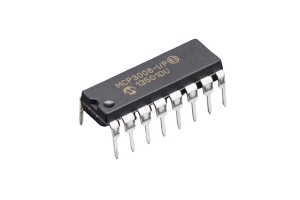
A Complete Overview of the MCP3008 ADC
στο 2024/11/5
Δημοφιλείς θέσεις
-

Τι είναι το GND στο κύκλωμα;
στο 1970/01/1 2881
-

Οδηγός σύνδεσης RJ-45: Κωδικοί σύνδεσης RJ-45, Σχέδια καλωδίωσης, Εφαρμογές R-J45, RJ-45 Datasheets
στο 1970/01/1 2460
-
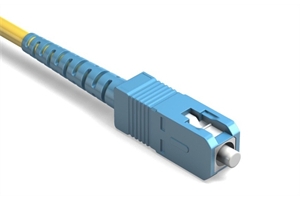
Τύποι σύνδεσης ινών: SC vs LC και LC VS MTP
στο 1970/01/1 2056
-
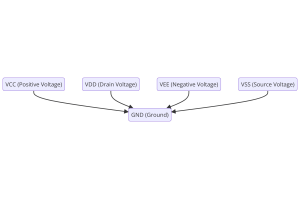
Κατανόηση τάσεων τροφοδοσίας σε ηλεκτρονικά VCC, VDD, VEE, VSS και GND
στο 0400/11/7 1827
-

Σύγκριση μεταξύ DB9 και RS232
στο 1970/01/1 1746
-
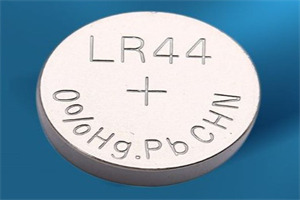
Τι είναι η μπαταρία LR44;
Η ηλεκτρική ενέργεια, αυτή η πανταχού παρούσα δύναμη, διαπερνά ήσυχα κάθε πτυχή της καθημερινής μας ζωής, από τα ασήμαντα gadgets έως τον απειλητικό για τη ζωή ιατρική εξοπλισμό, παίζει έναν σιωπηλό ρόλο.Ωστόσο, η πραγματικ...στο 1970/01/1 1698
-

Κατανόηση των θεμελιωδών στοιχείων: Αντίσταση επαγωγής, και καταφύγιο
Στον περίπλοκο χορό της Ηλεκτρολόγων Μηχανικών, ένα τρίο θεμελιωδών στοιχείων παίρνει το κεντρικό στάδιο: επαγωγή, αντίσταση και χωρητικότητα.Κάθε φέρει μοναδικά χαρακτηριστικά που υπαγορεύουν τους δυναμικούς ρυθμο...στο 1970/01/1 1641
-

CR2430 Περιεκτικός οδηγός μπαταρίας: Προδιαγραφές, εφαρμογές και σύγκριση με μπαταρίες CR2032
Τι είναι η μπαταρία CR2430;Οφέλη από μπαταρίες CR2430ΚανόναςΕφαρμογές μπαταρίας CR2430CR2430 ισοδύναμοCR2430 VS CR2032Μέγεθος μπαταρίας CR2430Τι να ψάξετε όταν αγοράζετε το CR2430 και τα ισοδύναμαΦύλλο δεδομένων PDFΣυχνές ερωτήσεις Οι μπαταρ...στο 1970/01/1 1512
-

Τι είναι το RF και γιατί το χρησιμοποιούμε;
Η τεχνολογία ραδιοσυχνότητας (RF) αποτελεί βασικό μέρος της σύγχρονης ασύρματης επικοινωνίας, επιτρέποντας τη μετάδοση δεδομένων σε μεγάλες αποστάσεις χωρίς φυσικές συνδέσεις.Αυτό το άρθρο βυθίζεται στα βασικά του RF, ...στο 1970/01/1 1499
-

CR2450 VS CR2032: Μπορεί να χρησιμοποιηθεί η μπαταρία;
Οι μπαταρίες του μαγγανίου λιθίου έχουν κάποιες ομοιότητες με άλλες μπαταρίες λιθίου.Η υψηλή ενεργειακή πυκνότητα και η μακρά διάρκεια ζωής είναι τα χαρακτηριστικά που έχουν κοινό.Αυτό το είδος μπαταρίας έχει κερδίσε...στο 1970/01/1 1483

